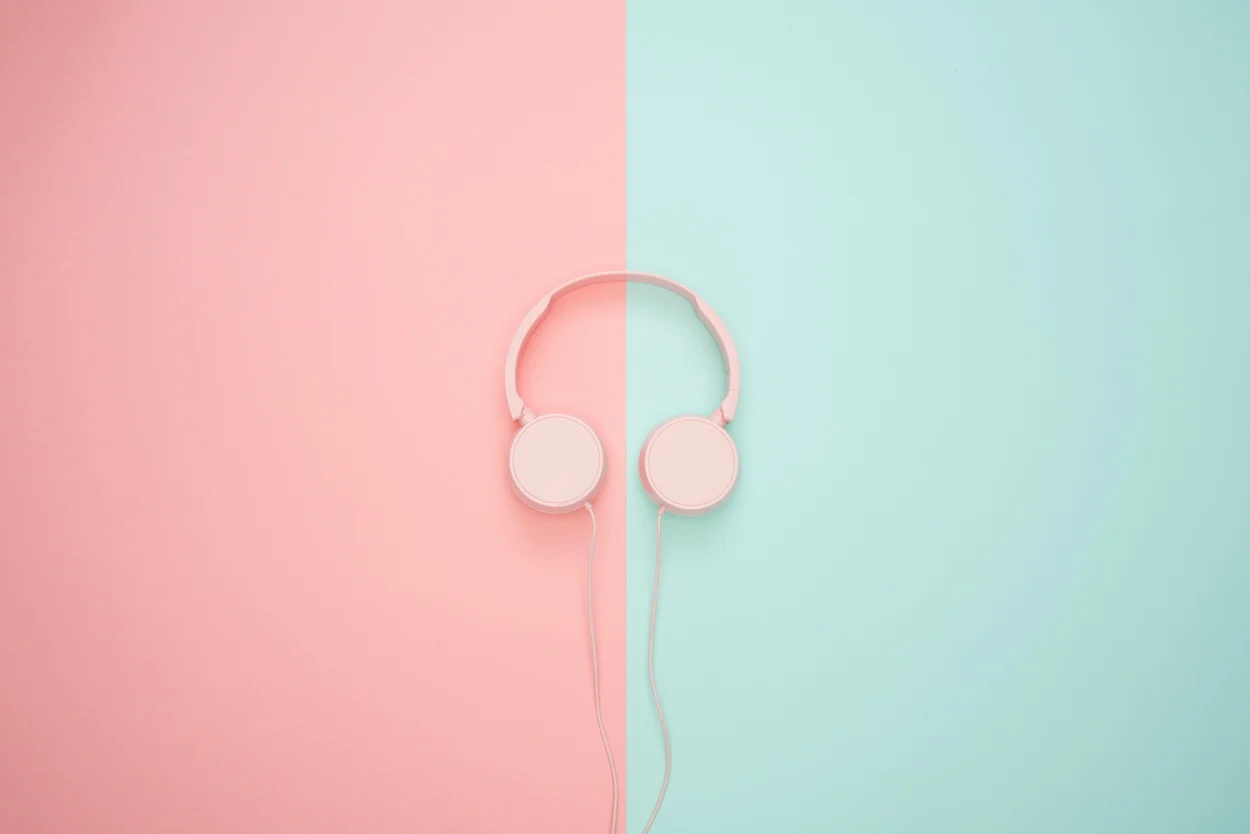WAV, Vorbis, and MP3 are some of the audio formats that store audio data. Since the file size is usually larger in which original audio is recorded, different formats are used to compress them so you can store them using less digital space. Sadly, the compression of digital audio causes a loss of data, which makes quality suffer.
MP3 is a lossy format that is the most common yet awful one. With the MP3 format, you can compress files at different bitrates. The lower the bitrate, the less memory it’ll consume on your device.
As far as you’re wondering about the difference between a 128 kbps file and a 320 kbps file, here’s a quick answer.
A 320 kbps file gives you low-quality sound by maintaining a low bitrate while 128 kbps file size has an even lower bit rate with more poor quality sound.
Let me tell you that some information is missing in both, which makes them terrible for some people. Keep on reading if you’re interested in learning more about both file sizes and their sound quality in depth. Additionally, I’m going to give you an overview of all the file formats.
Let’s dive into it…
File Formats
The file formats in which you can listen to the music cater to different users. Mainly, three file formats offer different qualities of music.
Lossless files are larger and consume more space on your computer and mobile though they don’t have any sound problems.
Another lossy format is the one that compresses the audio file by removing the inaudible sounds.

Types
The table below explains those file formats in detail.
| Size | Quality | Definition | |
| Lossless | Huge file size | Has raw data that sound was created with. Not suitable for everyday users. | FLAC and ALAC |
| Lossy | Reduced file size | Poor quality removes unnecessary information using compression | MP3 and Ogg Vorbis |
Lossy formats such as MP3 have now become standard formats. A lossless file of 500MB stored in FLAC will become a 49 MB file in MP3.
Not everyone will be able to differentiate a sound stored on FLAC and MP3. Though the lossless format is sharper and clear.
Bitrate
The quality of music is directly related to the bitrate. The higher the bitrate, the better the quality of your music.
The rate at which several samples are transferred per second into digital audio is known as the sampling rate.
Let me tell you that a higher number of samples per second is the key to better sound quality. You can think of bit rates as sampling rates.
But the difference is that here the number of bits is transferred per second rather than samples. To be concise, bitrate has all the effects on storage space and quality.
What is kbps?
Bitrate is measured in terms of kbps or kilobits per second, and the name is self-explanatory. Kilo means thousand, so kbps is the rate of transfer of a certain 1000 bits per second.
If you see 254 kbps written, it means that in one second, 254000 bits are being transferred.
128 kbps
As the name indicates, it needs 128000/128 kilo-bits to transfer the data.
Pros
- Quick data transfer rate
- Less storage space
Cons
- Irreversible loss of quality
- Detectable by professionals, so it can’t be used professionally

320 kbps
In one second 320 kilo-bits of data can be transferred
Pros
- High-resolution sound
- Good quality audio
- All instruments can be heard clearly
Cons
- More storage space is needed
- Download will take more time due to the bigger size
Difference Between 128 kbps and 320 kbps
MP3, a lossy audio format, is one of the most popular audio formats on the internet due to its ability to compress digital audio files while maintaining their quality and integrity.
As well as being able to be played back on almost any device because of its universality. Devices include mobile phones and digital audio players such as iPods or Amazon Kindle Fire.
MP3 offers different settings, including 128 kbps and 320 kbps. You can create these compressed files with lower and higher bitrates.
Comparison of 128 kbps and 320 kbps Audio Quality: Which is Better?
A higher bitrate is associated with high-quality audio, while a lower bitrate gives you lower-quality audio.
Let’s compare them in the table below.
| 128 kbps | 320 kbps | |
| Type | MP3 | MP3 |
| Rate of Transfer | 128000 bits per second | 320000 bits per second |
| Quality | Average | HD |
| Space Required | Less space | More space |
The 128 kbps setting of this audio encoding format is of poor quality. Having less information, 128 kbps has fewer samples being transferred per second compared to 320 kbps. If you compare the quality of both settings, 320 kbps is the better option.
The advantage of keeping the sample rate and bitrate higher is that you get great-quality sound. The downside of recording at a higher audio resolution is space.
Are Low and High Bitrate MP3s Differentiable?
Lower and higher bitrate MP3s are differentiable.
MP3 files with a lower bitrate give you a flat sound with little depth but how an MP3 file will sound pretty much depends on your setup. Even a lower bitartrate mp3 file will sound better on a good setup.
Another thing that you need to understand is that a song recorded in lossy format sounds somehow terrible no matter what.
So, it’s important to record the original sound in a lossless format and then you can convert it to a lossy one to save your space. You can also go for AAC as it consumes less space and provides better quality than MP3 codecs.
What Are The Different Sound Qualities?
Sound quality is a subjective term, with individual preferences ranging from “good enough” to “amazing”. The most common terms used to describe sound quality are:
High-quality
It gives you clear, precise, and undistorted sound with minimal distortion. This is what you would expect from a high-end product or system.
Medium-quality
It provides you with clear, precise, and undistorted sound with reduced distortion. As a mid-range product or system, this is what you would expect.
Low-quality
You get distorted, unclear, or muffled sounds. This is to be expected from an entry-level product or system.
The best sound quality is achieved by using a high-quality audio device. The best audio device is one that has a very high-quality output. This means that the sound will be clear and crisp, but it does not mean that it will be loud.
Bitrate Musicians Record In
Musicians are recording at a bit rate that produces the best possible quality but still allows them to record all of the instruments and vocals they want while maintaining a good sound level.
The bitrate needed to record music is based on your personal choices and preferences, though the most common ones are 24-bit stereo and 48 kHz.
As discussed earlier, the sound makers make music in lossless file formats. When distributing music digitally, it is encoded into lower bitrate codecs.
Producing music in a lossy format makes you lose information, and there’s no way of getting it back. Here you must keep in mind that you lose approximately 70% to 90% of the data from the original file when encoded to mp3 codecs.
To get the best sound quality, you should try to find a mic that has as low of a noise floor as possible. You can do this by using software or hardware to measure the frequency response of your microphone. The lower the frequency response, the better your recording will be.
If you want even better quality, consider getting a USB microphone instead of an XLR mic. USB microphones are usually cheaper and easier to use than XLR microphones and can be plugged directly into your computer.

Common Audio Devices
The most common types of audio devices are shown in the table below.
| Devices | Uses |
| Stereo systems | These use two speakers to provide stereo sound |
| Surround sound systems | These use multiple speakers around your ears and give you a sense of depth when listening |
| Headphones | These are used to listen to music or watch movies on your phone, laptop, or tablet |
Conclusion
- MP3, WAV, and Vorbis are common audio formats used to store audio data. MP3 is the most popular but lossy format.
- MP3 files can be compressed at different bitrates. 128 kbps and 320 kbps are common options.
- Bitrate directly affects audio quality. Higher bitrates offer better sound quality but require more storage space.
- 320 kbps MP3 files provide higher-quality audio than 128 kbps files due to their higher bitrate.
- Despite compression, lossy formats like MP3 result in irreversible loss of quality. It is especially noticeable at lower bitrates.
- Musicians often record music in lossless formats like FLAC before converting to lossy formats like MP3 for distribution.
- Choosing between 128 kbps and 320 kbps MP3 files involves a trade-off between file size and audio quality.
- Opting for higher bitrates, such as 320 kbps, generally ensures better sound quality, while lower bitrates sacrifice quality for smaller file sizes.

